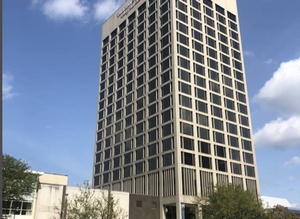Articles
The Families First CORONAVIRUS Response Act
By Joseph T. Bartulis, Jr. on March 19, 2020On March 18th, 2020, President Trump signed into law the second piece of legislation to deal with the COVID-19 pandemic. The purpose of this update is to advise employers on the three main components of the March 18th legislation: Paid Sick Leave, Paid Family and Medical Leave, and tax credits for employers.
Paid Sick Leave
Effective April 1, 2020 employees of private sector employers with fewer than 500 employees are now entitled to the following sick leave under two possible scenarios. This leave is available to full-time and part-time employees alike, regardless of how long they have been employed by the employer. This new leave is completely separate from any paid sick leave to which an employee may be entitled to under his or her employer’s sick leave plan or the Massachusetts Earned Sick Leave law.
Scenario 1: Employee is sick or quarantined
To qualify for these two weeks of paid leave, the employee must be unable to perform the essential functions of his or her job (at the office or remotely, e.g. at home) and is either subject to a federal, state, or local quarantine order, or has been directed by his or her health care provider to quarantine for coronavirus-related health concerns, or is suffering from coronavirus symptoms for which he or she is seeking medical attention and diagnosis. The employee will:
On the other hand, if the employee cannot perform the essential functions of his or her job (at the office or remotely, e.g. home) and must be at home to care for a family member who was quarantined by his or her health care provider for coronavirus-related health concerns, or to care for a child under 18 (or an adult disabled child) whose school or daycare is closed due to the coronavirus, paid leave is still available but at a lower weekly rate. The employee will:
Keep in mind that this new law and the recently passed Massachusetts Paid Family and Medical Leave are two separate pieces of legislation. The Massachusetts Paid Family and Medical Leave Act Leave Act does not take effect until January 1, 2021.
Paid Family and Medical Leave
Under this provision of the Families First Act, employees of private sector employers with fewer than 500 employees will also be able to take up to twelve weeks of FMLA job-protected leave to care for a child under 18 whose school or daycare is closed due to the coronavirus. Note that the FMLA’s usual definitions of “covered employer” (one with 50 or more employees) and “covered employee” (one who has worked for the employer at least one year and who worked at least 1,250 hours during the prior year) are not being used under the Families First Act. Under the Families First Act, a “covered employer” is any private sector employer with fewer than 500 employees and a “covered employee” is any employee who has worked for the employer for thirty days or more.
Pay elements
The first two weeks of leave may be unpaid under this law (though, those two weeks may be paid via the above discussed Paid Sick Leave legislation that was also passed). If the employee does not qualify for the federal paid sick leave to cover the first two weeks and he or she does not have access to federal paid sick leave detailed below, the employee may choose – and the employer may require – the employee to substitute any of his or her accrued paid leave time to cover this two-week period.
The employee may receive up to two-thirds of his or her regular daily pay, up to $200 dollars per day and up to $10,000 in total.
If an employee’s regular weekly rate of pay fluctuates, the law directs employers to divide the total number of hours the employee was scheduled to work during the six months immediately prior to the leave period, and divide by 26 to arrive at his or her weekly rate.
While the legislation provides little guidance on this point, there is language in the legislation that gives the US Secretary of Labor the ability to exempt small businesses employing fewer than fifty employees from having to provide this leave when the Secretary determines that paying this leave time might affect the business’ ability to continue existing.
Job Protection
General rule: Employees who access federal paid family and medical leave must be returned to the job they held immediately preceding the leave or an equivalent position.
Exception: Employers with fewer than twenty-five employees need not return the employee his or her former position or its equivalent if the position has been eliminated as a result of the coronavirus and the employer notifies the employee it intends to rehire the employee to his or her position or its equivalent if and when it becomes available in the twelve months from when the employee would have otherwise returned.
EMPLOYER TAX CREDITS
Employers who pay employees for accessing one (or both) of the paid leaves discussed above, will receive payroll tax credits for up to one hundred percent of qualified employee wages paid by the employer. The tax credit will count towards the employer’s portion of the Social Security payroll taxes. Additionally, the tax credit will be increased to include money the employer pays towards the employee’s health insurance coverage while the employee is out on either of the above two federal leaves. The tax credit cannot exceed the employer’s total payroll tax burden on all employee wages.
LAYOFFS/FURLOUGHS/WORKSHARE
Many Massachusetts employers are grappling with how to retain good talent and do the best they can by their valued employees while their business is either temporarily shut down or operating on a limited, scaled-back basis.
The three primary options are furloughs, layoffs, and the DUA’s “Workshare” program. In each case employees can receive some or all of their unemployment compensation benefit. Under either a layoff or a furlough, employees will receive their entire unemployment benefit since they are not working for the applicable period. Under the Workshare program, employees will be working a reduced schedule (therefore, reduced wages); these reduced wages will be supplemented by some portion of their unemployment benefit. Under the Massachusetts Workshare program, an employee works for their employer for some period of the week and collects unemployment for the period of time they are not working. While there are mechanics to how a Workshare program and a furlough are implemented, readers may contact us for more information about these two approaches.
NEW UNEMPLOYMENT PROVISIONS
Usually, for an employee in Massachusetts to be eligible to collect unemployment, he or she must first be out of work for at least one week (called the elimination period), and he or she must be actively looking for other employment and be ready and able to work if offered other employment. During this coronavirus pandemic, the US Department of Labor has directed states to loosen their requirements for the collection of unemployment benefits. In response, the Massachusetts Executive Office of Labor and Workforce Development and the Massachusetts Department of Unemployment Assistance (DUA) have jointly filed emergency regulations regarding how unemployment claims will be handled during the pandemic.
©2020. This material is intended to offer general information to clients, and potential clients, of the firm, which information is current to the best of our knowledge on the date indicated below. The information is general and should not be treated as specific legal advice applicable to a particular situation. Fletcher Tilton PC assumes no responsibility for any individual’s reliance on the information disseminated unless, of course, that reliance is as a result of the firm’s specific recommendation made to a client as part of our representation of the client. Please note that changes in the law occur and that information contained herein may need to be reverified from time to time to ensure it is still current. This information was last updated March 2020.
Paid Sick Leave
Effective April 1, 2020 employees of private sector employers with fewer than 500 employees are now entitled to the following sick leave under two possible scenarios. This leave is available to full-time and part-time employees alike, regardless of how long they have been employed by the employer. This new leave is completely separate from any paid sick leave to which an employee may be entitled to under his or her employer’s sick leave plan or the Massachusetts Earned Sick Leave law.
Scenario 1: Employee is sick or quarantined
To qualify for these two weeks of paid leave, the employee must be unable to perform the essential functions of his or her job (at the office or remotely, e.g. at home) and is either subject to a federal, state, or local quarantine order, or has been directed by his or her health care provider to quarantine for coronavirus-related health concerns, or is suffering from coronavirus symptoms for which he or she is seeking medical attention and diagnosis. The employee will:
- Receive up to two weeks of paid leave – based on the employee’s regularly scheduled hours worked each week (up to forty per week and eighty hours total).
- Be paid at one’s regular rate of pay or $511 per day, whichever is less.
On the other hand, if the employee cannot perform the essential functions of his or her job (at the office or remotely, e.g. home) and must be at home to care for a family member who was quarantined by his or her health care provider for coronavirus-related health concerns, or to care for a child under 18 (or an adult disabled child) whose school or daycare is closed due to the coronavirus, paid leave is still available but at a lower weekly rate. The employee will:
- Receive up to two weeks of paid leave – based on the employee’s regularly scheduled hours worked each week (up to forty per week and eighty hours total).
- Be paid at one’s regular rate of pay or a maximum of $200 per day, whichever is less.
Keep in mind that this new law and the recently passed Massachusetts Paid Family and Medical Leave are two separate pieces of legislation. The Massachusetts Paid Family and Medical Leave Act Leave Act does not take effect until January 1, 2021.
Paid Family and Medical Leave
Under this provision of the Families First Act, employees of private sector employers with fewer than 500 employees will also be able to take up to twelve weeks of FMLA job-protected leave to care for a child under 18 whose school or daycare is closed due to the coronavirus. Note that the FMLA’s usual definitions of “covered employer” (one with 50 or more employees) and “covered employee” (one who has worked for the employer at least one year and who worked at least 1,250 hours during the prior year) are not being used under the Families First Act. Under the Families First Act, a “covered employer” is any private sector employer with fewer than 500 employees and a “covered employee” is any employee who has worked for the employer for thirty days or more.
Pay elements
The first two weeks of leave may be unpaid under this law (though, those two weeks may be paid via the above discussed Paid Sick Leave legislation that was also passed). If the employee does not qualify for the federal paid sick leave to cover the first two weeks and he or she does not have access to federal paid sick leave detailed below, the employee may choose – and the employer may require – the employee to substitute any of his or her accrued paid leave time to cover this two-week period.
The employee may receive up to two-thirds of his or her regular daily pay, up to $200 dollars per day and up to $10,000 in total.
If an employee’s regular weekly rate of pay fluctuates, the law directs employers to divide the total number of hours the employee was scheduled to work during the six months immediately prior to the leave period, and divide by 26 to arrive at his or her weekly rate.
While the legislation provides little guidance on this point, there is language in the legislation that gives the US Secretary of Labor the ability to exempt small businesses employing fewer than fifty employees from having to provide this leave when the Secretary determines that paying this leave time might affect the business’ ability to continue existing.
Job Protection
General rule: Employees who access federal paid family and medical leave must be returned to the job they held immediately preceding the leave or an equivalent position.
Exception: Employers with fewer than twenty-five employees need not return the employee his or her former position or its equivalent if the position has been eliminated as a result of the coronavirus and the employer notifies the employee it intends to rehire the employee to his or her position or its equivalent if and when it becomes available in the twelve months from when the employee would have otherwise returned.
EMPLOYER TAX CREDITS
Employers who pay employees for accessing one (or both) of the paid leaves discussed above, will receive payroll tax credits for up to one hundred percent of qualified employee wages paid by the employer. The tax credit will count towards the employer’s portion of the Social Security payroll taxes. Additionally, the tax credit will be increased to include money the employer pays towards the employee’s health insurance coverage while the employee is out on either of the above two federal leaves. The tax credit cannot exceed the employer’s total payroll tax burden on all employee wages.LAYOFFS/FURLOUGHS/WORKSHARE
Many Massachusetts employers are grappling with how to retain good talent and do the best they can by their valued employees while their business is either temporarily shut down or operating on a limited, scaled-back basis.The three primary options are furloughs, layoffs, and the DUA’s “Workshare” program. In each case employees can receive some or all of their unemployment compensation benefit. Under either a layoff or a furlough, employees will receive their entire unemployment benefit since they are not working for the applicable period. Under the Workshare program, employees will be working a reduced schedule (therefore, reduced wages); these reduced wages will be supplemented by some portion of their unemployment benefit. Under the Massachusetts Workshare program, an employee works for their employer for some period of the week and collects unemployment for the period of time they are not working. While there are mechanics to how a Workshare program and a furlough are implemented, readers may contact us for more information about these two approaches.
NEW UNEMPLOYMENT PROVISIONS
Usually, for an employee in Massachusetts to be eligible to collect unemployment, he or she must first be out of work for at least one week (called the elimination period), and he or she must be actively looking for other employment and be ready and able to work if offered other employment. During this coronavirus pandemic, the US Department of Labor has directed states to loosen their requirements for the collection of unemployment benefits. In response, the Massachusetts Executive Office of Labor and Workforce Development and the Massachusetts Department of Unemployment Assistance (DUA) have jointly filed emergency regulations regarding how unemployment claims will be handled during the pandemic.
- First, the DUA is waiving the one-week elimination period so employees will be eligible to collect unemployment benefits beginning immediately upon being laid off or furloughed.
- Second, for workplaces that have shut down because of the coronavirus and the closure is anticipated to be four weeks or less, the employees will immediately be eligible to collect unemployment benefits without having to look for other employment during the closure--so long as the employee is willing and able to return to work when called upon to do so. If the employer concludes it will, or is required to be, shut down for up to an additional four weeks (eight total), the employees will be eligible to receive unemployment benefits for those additional weeks as well. It is anticipated that the DUA will extend this eight-week period as needed.
- Third, an employee who is subjected to a mandated quarantine imposed by a civil authority or a medical professional will be eligible to receive unemployment benefits during the quarantine period.
- Fourth, an employee who stops working because he or she was exposed to a reasonable risk of exposure or infection will also be eligible for unemployment benefits.
- Fifth, an employee who stops working because he or she needs to care for a family member and is either: (a) not allowed to return to work or (b) does not intend to return to work, will also be eligible for unemployment benefits.
©2020. This material is intended to offer general information to clients, and potential clients, of the firm, which information is current to the best of our knowledge on the date indicated below. The information is general and should not be treated as specific legal advice applicable to a particular situation. Fletcher Tilton PC assumes no responsibility for any individual’s reliance on the information disseminated unless, of course, that reliance is as a result of the firm’s specific recommendation made to a client as part of our representation of the client. Please note that changes in the law occur and that information contained herein may need to be reverified from time to time to ensure it is still current. This information was last updated March 2020.

















